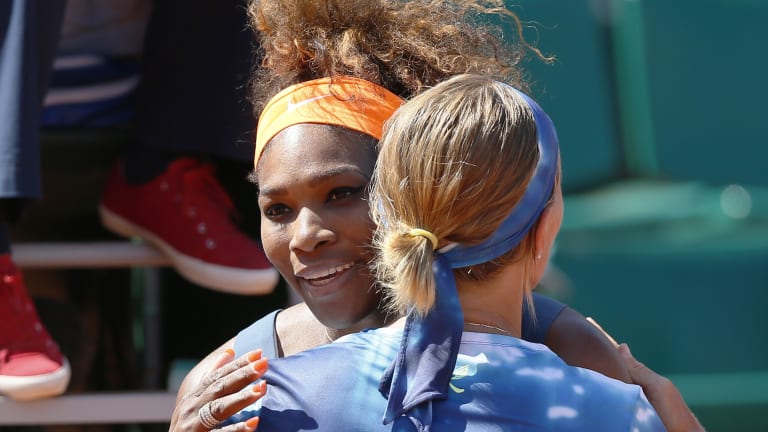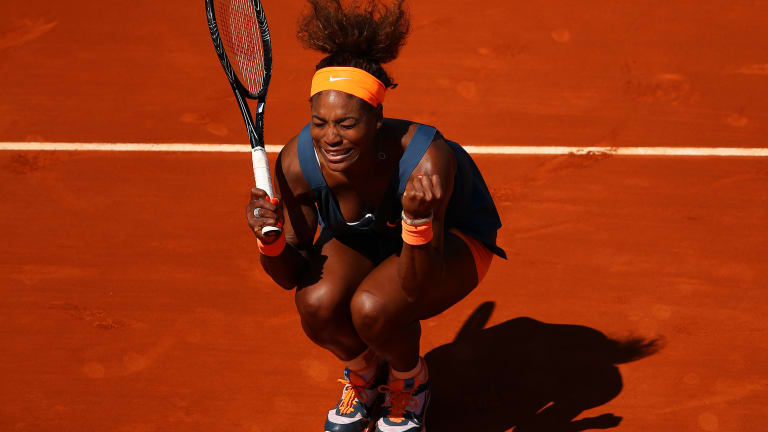"It’s about winning and losing,” Serena said. "I’m still a little bit upset about that loss last year but it’s all about how you recover. A champion isn’t defined by how much they win but how they recover from downs, whether those are injuries or losses."
The following season arguably saw Serena at her absolute best; even with a second "Serena Slam" on the horizon, Williams was at her most dominant in 2013, a season she would end with a superlative-defying 78-4 record, 13 finals and 11 titles out of 15 appearances.
That perfection extended to clay, as she slid to a treble of major clay-court victories in Charleston, Madrid, and Rome—leading up to a presumptive coronation in Paris.
It nearly didn’t happen, though, thanks to a quarterfinal clash with Kuznetsova, the 2009 champion who outlasted Williams that year in three sets. Kuznetsova was in the midst of her own career resurgence, starting the season with a run to the Australian Open quarterfinals, and was back in the last eight after a three-set thriller over Angelique Kerber.
Serena, conversely, had dropped just 10 games through four matches, and continued that trend against Kuznetsova with a thudding 6-1 opening set. The Russian, however, began to find her range and disrupt the No. 1’s pitch-perfect rhythm in the second set with a 4-0 lead of her own, and would level the contest at one set apiece.

